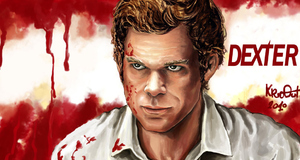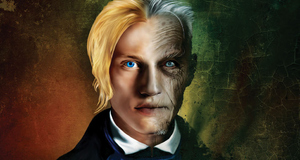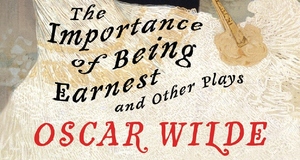A Duet for Christ and Dionysus:Tragedy in the Ideas of Friedrich Nietzsche and Oscar WildeThe Tragic StageIn Nietzsche’s (2000a) The Birth of Tragedy, the German philosopher seeks a way through “the labyrinth, as we must call it, of the Origin of Greek Tragedy” (p. 56). The Birth of Tragedy reflects Nietzsche’s growing desire at this point in his career to leave philology behind for philosophy, and so his book addresses Greek tragedies from Aeschylus to Euripides through the lens of contemporary philosophy—Schopenhauer’s pessimism—rather than that of classical scholarship. Nietzsche argues that “the continuous development of art is bound up with the Apollonian and Dionysian duality” (p. 33). Named respectively after the sun-god of poetry and reason and the satyr-god of wine and ecstasy, the Apollonian and Dionysian are antagonistic yet also complimentary mentalities that drove the development of Greek tragedy, which has its origin in the orgiastic festivals and dithyrambs dedicated to Dionysus, whose mythical dismemberment, death, and rebirth are at the spiritual center of classical tragic plotlines. The Dionysian mentality represents the pursuit of meaning, or essence in nature, through a passionate and intoxicating engagement with nature, even in confronting the inevitability of suffering and death. The Apollonian mentality, which represents the human faculty of reason, as well as humankind’s sense of individual identity as distinct from the external world, is the driving force behind everything that looks “simple, transparent, and beautiful” (p. 67) in art. The Apollonian mentality imposes the illusion of order and measure upon a disorderly and chaotic universe, fulfilling the human desire to occupy a rational universe that is finite and predictable. The Apollonian, Nietzsche writes, is like a dream, in which man’s insecurity about his existence, which he cannot confront directly, is encased in symbols and metaphors that the dreamer can confront, whereas “Dionysian man” confronts the harsh reality of unfulfilled desires, which Nietzsche borrows from Schopenhauer to be the definition of suffering. Nietzsche likens the Apollonian to the art of sculpture, the idealized and imagistic portrayal of distinct mythological figures, and the Dionysian to the art of music, the fluid, rhythmic conveyance of universal meanings and emotions (pp. 36-37).The great achievement of classical tragedy is the reconciliation of the Apollonian to the Dionysian. This is done through the transposition of a facade constructed of Apollonian structural elements upon Dionysian reality. In viewing tragedy, the audience suffers vicariously the downfall of the tragic hero before the gods, which are Apollonian symbols which disguise chaos and senseless suffering with the beautiful appearance of meaningful design. Although art consummates the Dionysian and Apollonian to achieve this high aesthetic experience, in The Birth of Tragedy Nietzsche (2000a) does distinguish between art that is more Dionysian versus more Apollonian in nature. An eternal champion of the Dionysian, Nietzsche laments that art has diminished into the Apollonian at the hands of Socrates, whose metaphysical form-philosophy treats art as a deception, a “seductive veil of beauty fluttering before his eyes” (p. 109). Tragedy, the most Dionysian kind of art, flourished under the Pre-Socratic Greeks who fully accepted and embraced the inevitability of suffering, without appealing to otherworldly sources of hope or vindication. Nietzsche writes, “[h]ow else could this people, so sensitive, so vehement in its desires, so singularly capable of suffering, have endured existence, if it had not been revealed to them in their gods, surrounded with a higher glory?” (p. 43). Viewing classical tragedy, Nietzsche (2000a) writes, the audience does not merely experience Dionysian suffering vicariously; the musical chorus, which narrates the plight of the tragic hero, draws the real audience into the tragic drama, disrupting the Apollonian distinction between fiction and reality. The tragic chorus functions as a secondary audience that witnesses the action of the drama though, like the real audience, cannot intervene in it. Greek drama was participatory in spirit (Easterling, 1997, p. 36); the ancient audience, driven into a frenzied state by the ecstasy of emotions portrayed in tragedy, overtook the stage, suspending their awareness of the tragedy’s artifactuality and sharing in the Dionysian euphoria of eyeless Oedipus weeping. Thus, the Apollonian and Dionysian dimensions in turn overtake one another; the symbolism of the tragic narrative draws the audience into a dream-world, yet the audience’s involvement in the tragic hero’s suffering induces a memento mori experience, drawing the audience into an authentic encounter with suffering—with reality. The poetic portrayal of fate incarnated in mythological deities, and the depiction of a tragic hero who epically resists, though ultimately submits to the wrath of those deities, casts suffering into an aesthetic light. Classical scholar Lloyd Jones expresses gratitude for Nietzsche’s discovery of the irrationality at the center of Greek civilization, and summarizes Nietzsche’s conception of the gods as follows: Nietzsche saw the ancient gods as standing for the fearful realities of a universe in which mankind has no special privileges. For him what gave the tragic hero the chance to display his heroism was the certainty of annihilation; and tragedy gave its audiences comfort not by purging their emotions but by bringing them face to face with the most awful truths of human existence and by showing how those truths are what make heroism true and life worth living. (as cited in Grant, 1986, pp. 82-83) In tragedy, the audience encounters suffering as an aesthetic condition in the beautiful heroism of the tragic hero, of Aeschylus’s Prometheus, before the gods, thus cultivating a perceptual optimism towards suffering itself. In chaining him- or herself with Prometheus’s manacle to the stones of fate, the audience member forgets the exclusivity of his or her own particular suffering, instead seeing himself as belonging to a universal condition in which all people suffer. As Nietzsche (2000a) writes, we may assume that we are merely images and artistic projections for the true author, and that we have our highest dignity in or significance as works of art—for it is only as an aesthetic phenomenon that existence and the world are eternally justified—while of course our consciousness of our own significance hardly differs from that which the soldiers painted on canvas have of the battle represented on it. (p. 52) This philosophical appropriation of suffering from the personal produces distance between the sufferer and his particular suffering, thus enabling joyful aesthetic contemplation. Art vindicates existence by rendering it aesthetic. “The tragic artist,” writes Nietzsche (1990) in Twilight of the Idols, “is not a pessimist—it is precisely he who affirms all that is questionable and terrible in existence, he is Dionysian . . .” (p. 6). Far more than a reflection of the Greek tragic view of life, Pre-Socratic classical tragedy is motivated by a joyful affirmation of life, a triumph over Schopenhauerian pessimism—and so, art itself becomes an act of heroism. Like The Birth of Tragedy (Nietzsche, 2000a), Wilde’s De Profundis (1996) confronts this tragic view of life. Wilde as well was influenced by the pessimism of Arthur Schopenhauer; Joseph Pearce (2000) writes that “Schopenhauer’s pessimism would only partially eclipse Wilde’s latent Christianity, creating a hybrid whose contradictions and confusions masked his true meaning, even from himself” (p. 82). In De Profundis, Wilde draws more from his personal experience of suffering than philosophical pessimism in the abstract—De Profundis, we must keep in mind, is an intensely personal love-letter to a former lover, not a philosophical treatise. “I have passed through every possible mode of suffering,” (p. 45) Wilde writes concerning his prison-episode. Wilde projects his suffering onto the figure of Jesus Christ, who becomes a tragic figure to provide Wilde with a context for coming to terms with his personal suffering. John Quintus (1991) notes that “Wilde approached Christ much as Wilde approached Christianity, in the sense that he sought to appreciate aesthetic and psychological possibilities inherent in each rather than espouse religious principles or theological lessons provided by each” (p. 515). Certainly, Wilde’s Christ is the embodiment of the “Romantic Individualism” (Hext, 2011, p. 202) which permeates his entire corpus: the innate value, authenticity, and fulfillment-of-the-self, all of which Wilde endorses especially in “The Soul of Man Under Socialism.” As Wilde (2003d) writes in that work, “he who would lead a Christlike life is he who is perfectly and absolutely himself” (p. 33). In De Profundis, Wilde (1996) legitimizes his conception of Christ as the secular image of perfection on the authority of his selfless love for those who suffer, thus affirming Wilde’s personal intimacy with Christ as a fellow sufferer. The precise nature of the relationship among the attributes of selflessness, love and individualism in Christ is not especially clear. Their unification within a single personality Wilde leaves, as he admits in De Profundis, as a “mystery,” (p. 62) so far as humankind can understand the fully human yet also fully divine Christ. Christ simply is Wilde’s thesis that the “imagination is simply a manifestation of love, and it is love and the capacity for it that distinguishes one human being from another” (p. 66) rendered in the flesh. Love, for Wilde, is the measure and scope of the imagination. By this measure, Christ is the most imaginative, and therefore also the most individualistic. Christ’s authority is founded on Wilde’s (1996) conception of Christ as the one who has suffered the most. In addition to his suffering on the cross, Christ takes upon his shoulders all the sins of humanity, “the sufferings of those whose names are legion and whose dwelling is among the tombs: oppressed nationalities, factory children, thieves, people in prison, outcasts, those whom are dumb under oppression and whose silence is heard only of God,” (pp. 56-57) and shows them the beauty of their suffering. The artist is one who has suffered immensely and, modeling Christ, perceives the beauty in suffering and renders it meaningful in art. Wilde writes: His morality is all sympathy, just what morality should be. If the only thing that he ever said had been, ‘Her sins are forgiven because she loved much,’ it would have been worth while dying to have said it. His justice is all poetical justice, exactly what justice should be. The beggar goes to heaven because he has been unhappy. I cannot conceive a better reason for his being sent there. (p. 65) Wilde’s Christ preaches that salvation is achieved not through moral good but rather through poetic works, although poetry, and art in essence, is merely the aesthetic appearance of love. Wilde writes that “love in the artist is simply the sense of beauty that reveals to the world its body and its soul” (p. 55). As Wilde emphasizes, Christ’s justice is not based on divine justice, restitution for one’s suffering, or retribution against sinners, all of which comprise the traditional Christian theological understanding of the love of God. Wilde even claims that “religion does not help me” (p. 47). It is the aesthetic perspective which redeems suffering, by illuminating the beauty that can be found in sorrow and its subsequent remedying. Thus, in Wilde’s (1996) portrayal of Christ there is little distinction between the aesthetic and the moral—as Nietzsche (2000a) also argues, morality itself is a system of conduct invented by the artist. Christ is an artist of the human medium; Wilde claims that Christ loved ignorant people because he “knew that in the soul of one who is ignorant there is always room for a good idea” (p. 65). As noted by Kate Hext (2011), Wilde’s Christ “repositions the life’s values from the heavens to the human heart” (p. 207). Wilde’s Christ repositions art itself from traditional artistic mediums (such as literature and drama) to the human medium, in which emotions, gestures and relationships are all rendered as aesthetic components which in summary form the individual personality as a complete work of art. Wilde claims that, if he were to ever write again, he would write on the subjects of “Christ as the precursor in the Romantic movement in life” and “the artistic condition in its relation to conduct” (p. 64). For Wilde, this “relation” implies no great distance between art and conduct; the way that the individual conducts him- or herself is equivalent to the articulation of an artistic statement which is his or her identity. Wilde’s (1996) conception of Christ as a tragic figure leads Wilde to interpret the crucifixion as a kind of meta-tragedy sustained by its Eucharistic reenactment in the Catholic Church, with which Wilde flirted throughout his life, culminating in his death-bed conversion to Catholicism in 1900. This meta-tragedy is re-enacted through the ritual of communion: When one contemplates all of this from the point of view of art alone one cannot but be grateful that the Supreme Office of the Church should be the playing of the tragedy without the shedding of blood: the mystical presentation, by means of dialogue and costume and gesture even, of the Passion of her Lord; and it is always a source of pleasure and awe to me to remember that the ultimate survival of the Greek chorus, lost elsewhere to art, is to be found in the servitor answering the priest at mass. (p. 57) Wilde’s interpretation of Catholic liturgical practice as tragic reenactment affirms Christ as a tragic hero and the crucifixion as a tragic drama in line spiritually with the conventions of the classical Greek genre. Wilde’s Christ is neither an omnipotent nor an omniscient divine figure, but is rather the victim of the pagan gods of fate that inflict suffering upon humanity, in line with Nietzsche’s (2000a) conception of the cruel pagan gods. Like Nietzsche, Wilde prescribes to a pessimistic view of reality, referring throughout De Profundis to the “gods” and to “Fate” that control his life: “as the gods are strange, and punish us for what is good and humane in us as much as much for what is evil and perverse, I must accept the fact that one is punished for the good as well as for the evil that one does” (p. 49). Wilde’s Christ, as discussed, is not a divine dealer of justice; he does not punish the wicked and reward the good. Wilde is uninterested in judgement, the restitution for one’s suffering and punishment for one’s sins that takes place only in the Christian afterlife. In subjecting Christ to the injustice of pagan gods, Wilde (1996) fashions Christ into a tragic model that is powerless to intervene in his tragic destiny, just as Wilde believes he was powerless to intervene in the succession of events that condemned him to Reading Gaol. It is in his role as a tragic hero that Christ assumes the mantles of supreme individual and the supreme artist; even in captivity, Wilde’s Christ creatively interprets his destiny and invents himself as a savoir of humankind, thus overcoming sorrow and vindicating his suffering as an artistic process of becoming. Wilde writes that the “strange figures of poetic drama and ballad are made by the imagination of others, but out of his own imagination entirely did Jesus of Nazareth create himself” (p. 62). Hence, Christ fulfills the equivalent role of Dionysus in Nietzsche’s (2000a) philosophy, as Wilde sees in Christ the consummation of all tragedies, on and off the stage.Continued on Next Page » Suggested Reading from Inquiries Journal
Inquiries Journal provides undergraduate and graduate students around the world a platform for the wide dissemination of academic work over a range of core disciplines. Representing the work of students from hundreds of institutions around the globe, Inquiries Journal's large database of academic articles is completely free. Learn more | Blog | Submit Latest in Literature |


















